- Home
- Stephen Baxter
World Engine
World Engine Read online
Dedication
To my cousin
Paul Richmond
1969–2018
World Engines Destroyer
Stephen Baxter
GOLLANCZ
london
Contents
Dedication
Title Page
Part One
Chapter 1
Chapter 2
Chapter 3
Chapter 4
Chapter 5
Chapter 6
Chapter 7
Chapter 8
Chapter 9
Chapter 10
Chapter 11
Chapter 12
Chapter 13
Chapter 14
Chapter 15
Chapter 16
Chapter 17
Chapter 18
Chapter 19
Chapter 20
Chapter 21
Chapter 22
Chapter 23
Chapter 24
Chapter 25
Chapter 26
Chapter 27
Chapter 28
Chapter 29
Part Two
Chapter 30
Chapter 31
Chapter 32
Chapter 33
Chapter 34
Chapter 35
Chapter 36
Chapter 37
Chapter 38
Part Three
Chapter 39
Chapter 40
Chapter 41
Chapter 42
Chapter 43
Chapter 44
Chapter 45
Chapter 46
Chapter 47
Chapter 48
Chapter 49
Chapter 50
Chapter 51
Chapter 52
Chapter 53
Chapter 54
Chapter 55
Chapter 56
Chapter 57
Chapter 58
Part Four
Chapter 59
Chapter 60
Chapter 61
Chapter 62
Chapter 63
Chapter 64
Chapter 65
Chapter 66
Chapter 67
Chapter 68
Chapter 69
Chapter 70
Chapter 71
Part Five
Chapter 72
Afterword
Also By Stephen Baxter From Gollancz:
Copyright
ONE
On Her Youth, and Her Meeting with Malenfant
Note: Section headings are taken from The Testament of Greggson Deirdra, compiled at Edo Station, Luna, AD 3451.
1
My name is Reid Malenfant.
You know me. Yeah, the guy who crashed the space shuttle. But, you know, I was only in the left-hand seat of that booster stage in the first place because I was always an incorrigible space cadet.
Now I want to talk about why I became a space cadet.
It started with a simple question:
Where is everybody?
As a kid I used to lie at night out on the lawn, soaking up dew and looking at the stars, trying to feel the Earth turning under me. It felt wonderful to be alive – hell, to be ten years old, anyhow.
But I knew that the Earth was just a ball of rock, on the fringe of a nondescript galaxy.
As I lay there staring at the stars – the thousands I could pick out with my naked eyes, the billions that make up the great wash of our Galaxy, the uncounted trillions in the galaxies beyond – I just couldn’t believe, even then, that there was nobody out there looking back at me down here. Was it really possible that this was the only place where life had taken hold – that only here were there minds and eyes capable of looking out and wondering?
But if not, where are they? Why isn’t there evidence of extraterrestrial civilisation all around us?
As a kid on that lawn, I didn’t see them. I seemed to be surrounded by emptiness and silence.
Later, I looked this stuff up properly. Turns out this paradox was first stated clearly by a twentieth-century physicist called Enrico Fermi. And it struck me as a genuine mystery. The contradictions are basic. Life seems capable of emerging everywhere. Just one starfaring race could easily have covered the Galaxy by now. The whole thing seems inevitable – but it hasn’t happened.
Thinking about paradoxes is the way human understanding advances. I realised the Fermi paradox was telling me something very profound about the universe, and our place in it.
Or was.
Of course, everything is different now.
Turns out they were here all the time.
Or anyhow, their mighty Engines.
All the time—
I’m in a flat spin—
2
Can you hear me?
Flat spin. I’m in a flat spin—
Try to be calm. It’s over now.
Over? . . .
Do you know who you are?
My name is Reid Malenfant. You know me. And you know I’m an incorrigible space cadet. I – my name is . . . Where am I?
Don’t worry about that for now.
I bet I’m back in crew quarters at KSC, right? In my room. On the bed, under that big oil painting of Neil Armstrong shaking hands with Richard Nixon?
Don’t worry—
Where’s Michael? My son, Michael? Is he safe? Does he know where I am?
Michael can come to no harm.
What the hell does that mean? Look, he’s a grown man, but he lost his mother to a space accident aged ten, and now—
He is beyond harm. Believe me. You must concentrate on yourself.
Myself? So . . . the mission’s over, right? What, am I emerging from some kind of bender? You’re fifty-nine years old, Malenfant, you should know better than to compete with those millennial fighter jocks. Though generally the Jack Daniel’s leaves me able to see, at least.
That will come. The nanomeds—
Nanomeds? What about the bird, Constitution?
Constitution. Yes. The space shuttle booster stage you were flying, before . . . Good, Colonel Malenfant. It’s good that you’re remembering that much.
It is?
It has been quite a challenge for us, you know.
What has?
Your treatment.
What treatment?
One thing at a time. You know who you are. We have established that.
My name is Reid Malenfant. And I know how I got here.
You do?
In general terms. I – how’s my pilot?
Your pilot?
Nicola Mott. I was commander of the Constitution, she was the pilot. Two-person crew.
British.
Mott is British. Spring chicken at forty-nine years old, ten years younger than me, and sharp as a tack and very experienced. Listen, she was in NASA a decade before I finally got in, and the agency in the nineties was a tough place to progress if you weren’t American, male and a pilot. But Nicola had fixated on the first flights of the shuttle when she was seven, eight, and had wanted to fly in space ever since. So she did. She migrated to the US, worked at McDonnell-Douglas on space station engineering, got into NASA, worked Mission Control, finally made it into the astronaut pool . . . You know, we have this saying in NASA: you train the new guy to be your replacement. Well, Nicola is no novice, but some day soon she’s going to be my replacement . . .
Nicola.
How is she?
We can discuss that, Colonel Malenfant.
Just Malenfant. What do I call you?
Karla. Just Malenfant. Just Karla.
Karla . . .
Tell us how you got here.
You want the long story, or the short?
What, are you in a rush?
&nb
sp; . . . Was that a joke? Karla, I think we’ll get along fine, you and me.
OK.
The life story.
I got here through aeroplanes, and war, and science fiction.
I was a little kid in the sixties, remember. You had Fireball XL5 on Saturday morning TV, and Star Trek in prime time, and I devoured Wells and Clarke and Heinlein and all those other guys.
And there was space, of course. I was seventeen when the shuttle first flew, Armstrong riding atop Constitution, John Young commanding the orbiter, Fred Haise the booster plane . . . So there was all that going on.
And meanwhile my daddy first took me flying when I was three – so he said, I don’t remember that far back. I grew up knowing he’d been an aviator, though. Flew in Korea. And his father had flown in the Second World War. Went up in a P-51 Mustang against German jet planes. Hell of a thing. As a veteran too.
So, eighteen years old, I made my first approach to NASA. I soon learned it was a long road ahead. Go to college, they said.
My mother helped me find the right courses at Columbia U, and then I got a job with Sperry Engineering, who had a lot of contacts with the space programme. I was building a career, a profile.
Then in the early eighties they announced the schedule for the Project Ares Mars mission, and I got all fired up again. Impatient, I guess. I tried NASA, again. Got nowhere.
So I took a gamble and went back to college. Well, four of the first dozen Moon walkers had been to MIT. I went to Princeton, this was around 1982, because I knew O’Neill was teaching there. The space colonies guy – the High Frontier? Wow, he opened up my eyes to what you could do in space, once it became economical to get there in the first place.
We must have watched Silent Running like fifty times.
I tried again for NASA. Bounced again. Turned out they wanted pilots more than dreamers at that stage.
So, I would have made my father and grandfather proud, I joined the USAF. Served my time at the Air Force Academy at Colorado Springs. This was around 1984; I was twenty-four years old. Turned out I was a half-decent flyer.
You became a military pilot.
Eventually served in the second Gulf War. But by then I was married, to Emma.
Emma Stoney.
Yeah. Emma Stoney. Always kept her own name, and damn right. She wasn’t your typical service wife of the time, and wouldn’t put up with the bum deal they got back then: low pay, moving the whole time, your husband overseas while you raise the kids in lousy military-base housing . . . We had grown up together, you know. Though she was ten years younger than me. We had met up again at a family wedding – her sister’s. And, after Michael was born, she turned out to be the first to join NASA, before me I mean.
She became a mission specialist.
Yeah. She always blamed me for inspiring her. I was that bit older. But I guess her strategy was smarter than mine. She went to college and took geology and climatology and planetary studies – not flying and engineering. NASA is full of pilots and engineers, but it turned out to be short of people who could understand planets and moons. All of which put her in prime position when the Phobos flight came up.
A flight planned to investigate the orbital anomalies.
Yeah . . . Phobos, moon of Mars, was acting very strangely. It was apparently being dragged down towards the planet, like Skylab, like a low-altitude space station. But Mars’s air was too thin for that, Phobos should have been too massive – if it was solid all the way through . . . There had been strange, contradictory observations for decades, and even more contradictory theories. Then in the late eighties they sent a space probe that proved the orbital decay was real, and Carl Sagan and other people started arguing for a dedicated crewed mission. And Emma got a seat, and she deserved it, by damn.
But by the time Emma left for Phobos you had become better known for your campaigns for private mining missions to the asteroids.
My campaigns? That’s what I did, buddy. I even established a start-up, Bootstrap, Inc. I guess I had a kind of revelation. About how we should be thinking about space. And I know precisely when.
Tell me.
It came in 2003.
Over Iraq.
I was never a combat pilot.
I was flying tankers in the sky – well, that turned out to be a good preparation for my later career flying shuttle boosters. The KC-135 Stratotanker had not dissimilar handling characteristics to the booster, as a matter of fact, another big, heavy aeroplane.
It was a hell of a theatre.
I remember Baghdad from the air. You have to understand this was a sprawling, modern city, like LA or Houston. Whole neighbourhoods going black as the power systems failed. The air defences like flashbulbs popping off, and tracer fire, and the searchlights probing the sky like something out of the Second World War. And the cruise missiles going in, and our planes whizzing low, their bombs going off with yellow flashes. In the sky, SAM missiles leaving grey scribbles in the air – and here and there you would see black smoke where somebody had got taken out. You know, nothing prepares you for the sudden understanding that somewhere out there is another human actively trying to kill you.
But we weren’t front line. We were tanker jocks. Our main job was support. We flew in fuel for depleted pilots. You know how we do what we do? A mid-air rendezvous with the fighter coming in behind and a little below, and we drop a boom which the fighter pilot latches on to, following our lights to keep position. ‘Leaded or unleaded today, buddy?’
But a subsidiary part of our function was spotting, as we flew around in the air over the combat zone, waiting for a customer.
And so I was a spotter when STS-445 was used to deliver a strike from orbit.
It was a DARPA experiment, really. Hell of a technical achievement. And hell of a sight, with a shuttle orbiter dropping down from space to drop a bunker-buster bomb slam on top of Saddam’s compound.
But I came out of that thinking, you know, there have to be better ways to use space hardware than this.
Not only that, if we ever do get out to the planets, the energy we will wield then, if used in war, could amount to a self-inflicted extinction event. Do the maths. We had to get out into space, but peacefully. Even if I wasn’t going myself.
So you quit the USAF—
And kick-started Bootstrap, Inc.
I had the vision and the engineering contacts.
And through the O’Neill people I met a guy called Frank J. Paulis. Younger than me, already an aerospace billionaire in his own right, but with dreams to do a lot more. He had plans he was pushing on NASA to send a mission to the solar focus, for instance, a point far out in space where gravity lensing would make it easier to pick up signals from aliens . . . He looked like John Belushi. You ever heard of him? Kind of dark, hulking. Acted like a Wall Street bruiser. But inside, he dreamed like Carl Sagan.
Paulis became the effective controller of Bootstrap, Inc., as well as the first big investor, with me as a kind of figurehead. And Paulis had great contacts of his own. He got in touch with Ann Reaves, the Shit Cola multi-billionaire. That was a time when the dot com boom was creating one super-rich baby boomer after another, but Reaves was one of the few who actually made stuff, as opposed to moving information around. And she had a dream of space. That was when we got to play with some serious money.
Well, we moved fast in those first few years, the first decade of the new century. The shuttles were flying almost weekly, we had people on the Moon and Mars – but O’Neill had always argued that it was going to be cheap access to space that transformed the fortunes of mankind. Because then you would have industrialisation and colonisation, and an expansive future off the planet. The space shuttle was a wonderful system, but it had never been cheap. And that was our angle.
So Paulis and I used Reaves’s seedcorn money to buy out an old Second World War airfield in the Mojave. Basically we were trying to build big, cheap, reusable boosters to undercut the shuttle. We even dredged the Atlantic for disca
rded engines from the Apollo-Saturn days, when they used to dump the burned-out rocket stages in the ocean. The engines were unusable, but a mine of parts and materials.
We had a long-term plan. An income stream from solar-power satellites by 2020, by 2050 a working economy in space, by 2100 a space economy exceeding Earth’s. And in the meantime, if the Earth needed space support, for example for big geoengineering climate-fix programmes, we would be in a position to offer it.
But in the short term we came up against bureaucratic snafus. NASA and the government were locked down by a cartel, a handful of suppliers, major corporations like Boeing and Lockheed Martin and Northrop Grumman, and they opposed us even being given licences to test-fire. And then there were the various outer space treaties that made it legally problematic to so much as look at an asteroid or a chunk of Moon rock as usable real estate. Space was the common heritage of mankind, they called it.
Funny you should mention that phrase . . .
I mean, I had some sympathy for the position. But we were caught in a tangle between cynical corporate types and starry-eyed rock-huggers, it felt like. But we made progress, little by little, in those first years.
And then, in 2004, Emma went to Phobos.
Her loss on that mission affected you badly.
Didn’t it just. And Michael.
We were told about the loss, you know, by an astronaut who came to our home. He’d been assigned to interface with the family – a CACO they call it, Casualty Assistance Care Officer. NASA has an acronym for everything. Ours was an early Apollo Moonwalker, Joe Muldoon, who had worked with Emma. I was star-struck even while I was grieving.
We had a service back home, just the families. No body to bury, of course. They used a form of service appropriate if you are lost at sea. And then we had to go to Houston for a memorial there, and then Washington with the President and the families, and the astronauts flying the missing-man formation in their T-38 trainers. Just like they had for Armstrong, when he died on the Moon in ’69.
We kind of grew apart in the aftermath. Michael and I, I mean. Of course I always supported him. He went to college, got into business administration. He planned a career in coal mining – expanding business, smart move, it looked like.

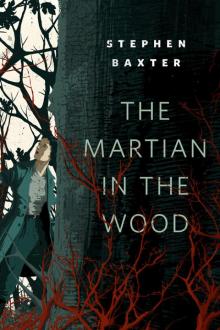 The Martian in the Wood
The Martian in the Wood THE H-BOMB GIRL
THE H-BOMB GIRL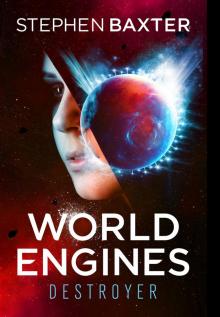 World Engine
World Engine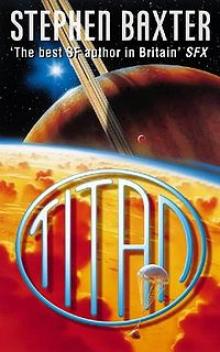 Titan n-2
Titan n-2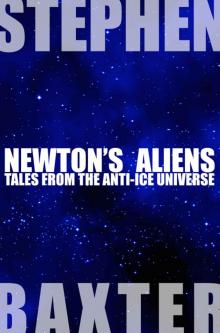 Newton's Aliens: Tales From the Anti-Ice Universe
Newton's Aliens: Tales From the Anti-Ice Universe Exultant
Exultant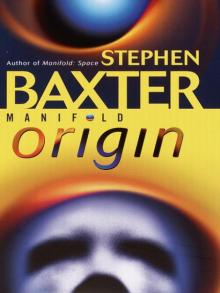 Manifold: Origin
Manifold: Origin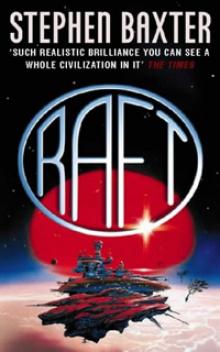 Raft xs-1
Raft xs-1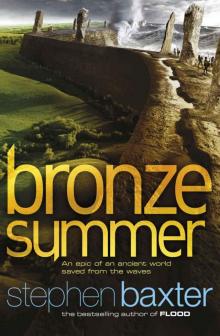 Bronze Summer n-2
Bronze Summer n-2 Transcendent
Transcendent Stone Spring
Stone Spring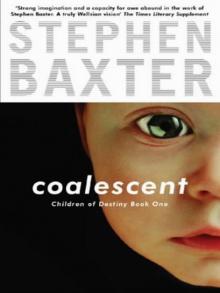 Coalescent
Coalescent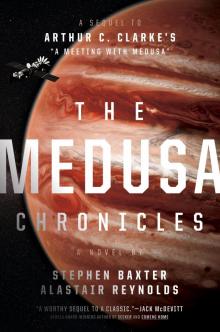 The Medusa Chronicles
The Medusa Chronicles Origin m-3
Origin m-3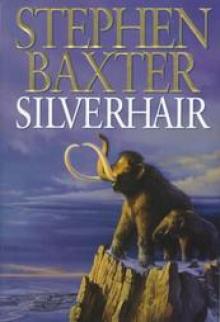 Silverhair tm-1
Silverhair tm-1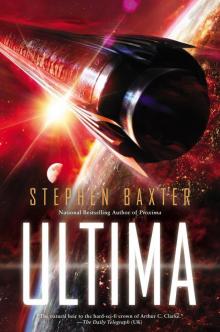 Ultima
Ultima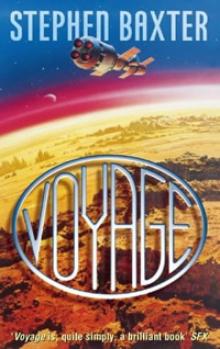 Voyage n-1
Voyage n-1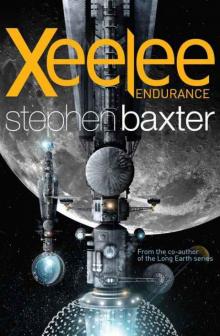 Xeelee: Endurance
Xeelee: Endurance Space m-2
Space m-2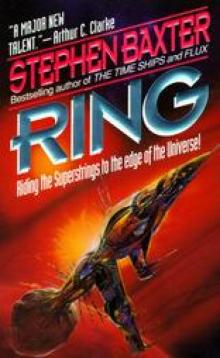 Ring xs-4
Ring xs-4 Raft
Raft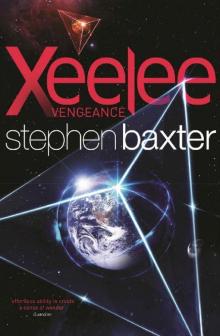 Xeelee: Vengeance
Xeelee: Vengeance Iron Winter n-3
Iron Winter n-3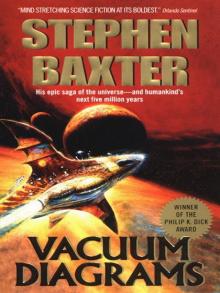 Vacuum Diagrams
Vacuum Diagrams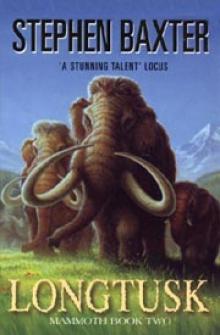 Longtusk tm-2
Longtusk tm-2 Proxima
Proxima Evolution
Evolution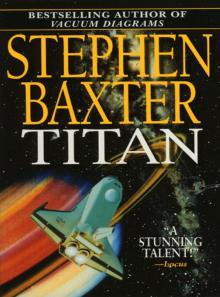 Titan
Titan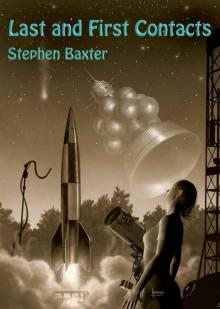 Last and First Contacts (Imaginings)
Last and First Contacts (Imaginings)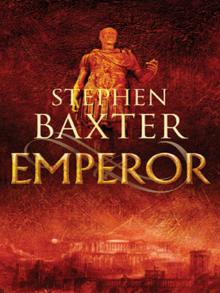 Emperor
Emperor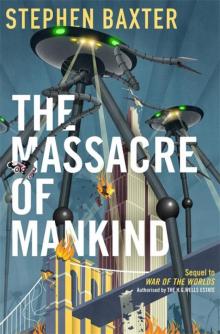 The Massacre of Mankind
The Massacre of Mankind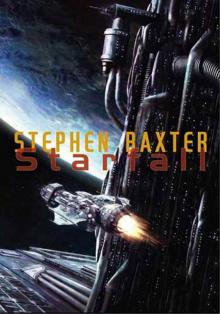 Starfall
Starfall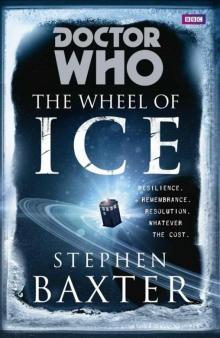 Doctor Who - The Wheel of Ice
Doctor Who - The Wheel of Ice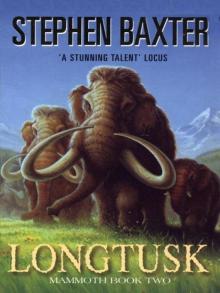 Longtusk
Longtusk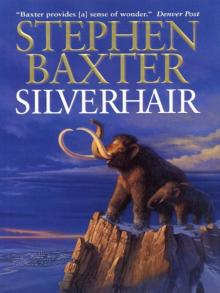 Silverhair
Silverhair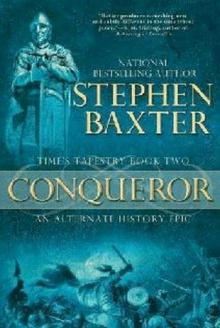 Conqueror tt-2
Conqueror tt-2 Flood
Flood Flood f-1
Flood f-1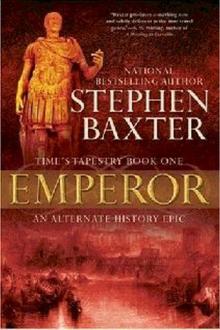 Emperor tt-1
Emperor tt-1 Moonseed
Moonseed Conqueror
Conqueror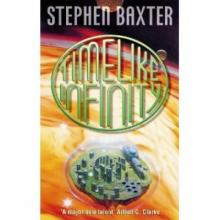 Timelike Infinity xs-2
Timelike Infinity xs-2 The Ghost Pit
The Ghost Pit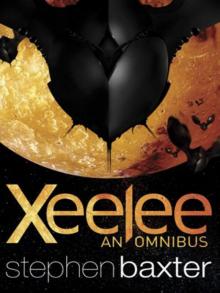 Xeelee: An Omnibus: Raft, Timelike Infinity, Flux, Ring
Xeelee: An Omnibus: Raft, Timelike Infinity, Flux, Ring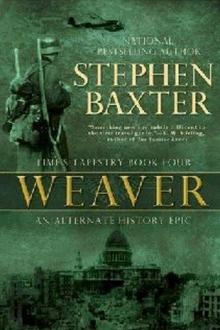 Weaver tt-4
Weaver tt-4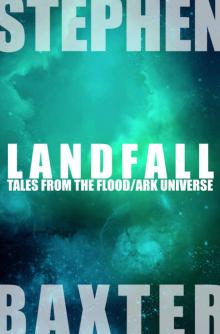 Landfall: Tales From the Flood/Ark Universe
Landfall: Tales From the Flood/Ark Universe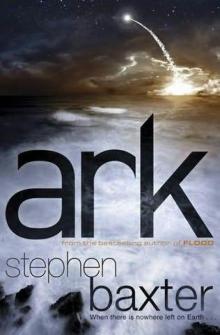 Ark
Ark Emperor: Time’s Tapestry Book One
Emperor: Time’s Tapestry Book One Space
Space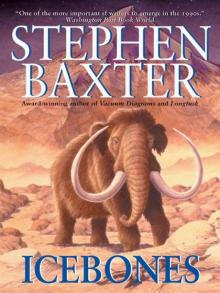 Icebones
Icebones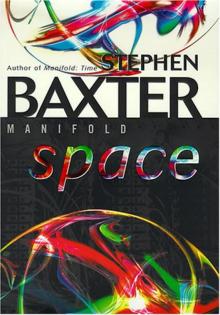 Manifold: Space
Manifold: Space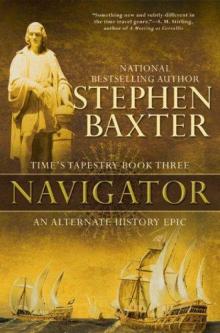 Navigator
Navigator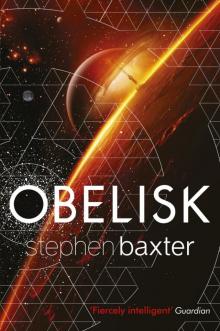 Obelisk
Obelisk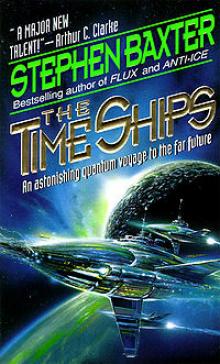 The Time Ships
The Time Ships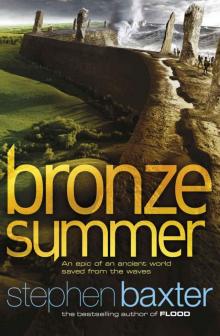 Bronze Summer
Bronze Summer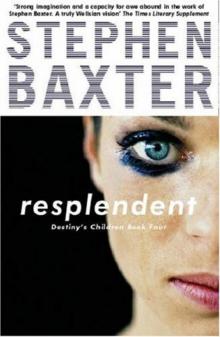 Resplendent
Resplendent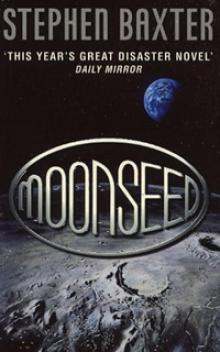 Moonseed n-3
Moonseed n-3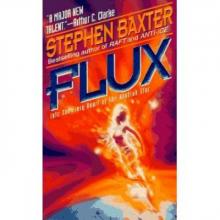 Flux xs-3
Flux xs-3 Transcendent dc-3
Transcendent dc-3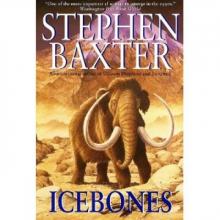 Icebones tm-3
Icebones tm-3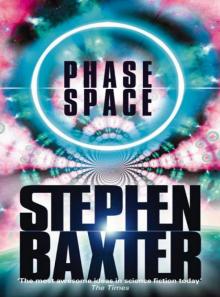 Phase Space
Phase Space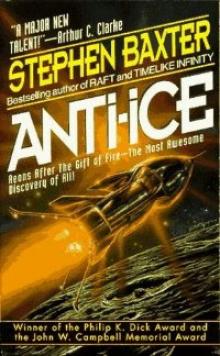 Anti-Ice
Anti-Ice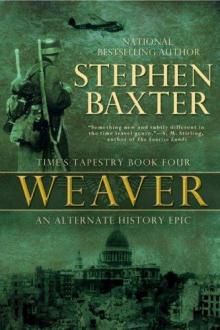 Weaver
Weaver Voyage
Voyage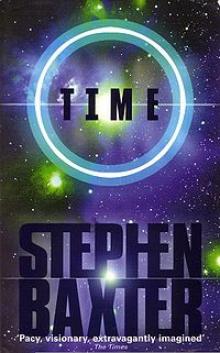 Time m-1
Time m-1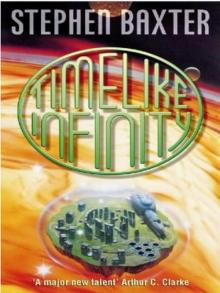 Timelike Infinity
Timelike Infinity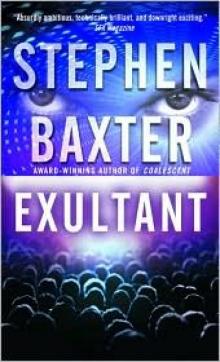 Exultant dc-2
Exultant dc-2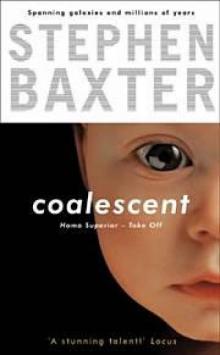 Coalescent dc-1
Coalescent dc-1 Navigator tt-3
Navigator tt-3